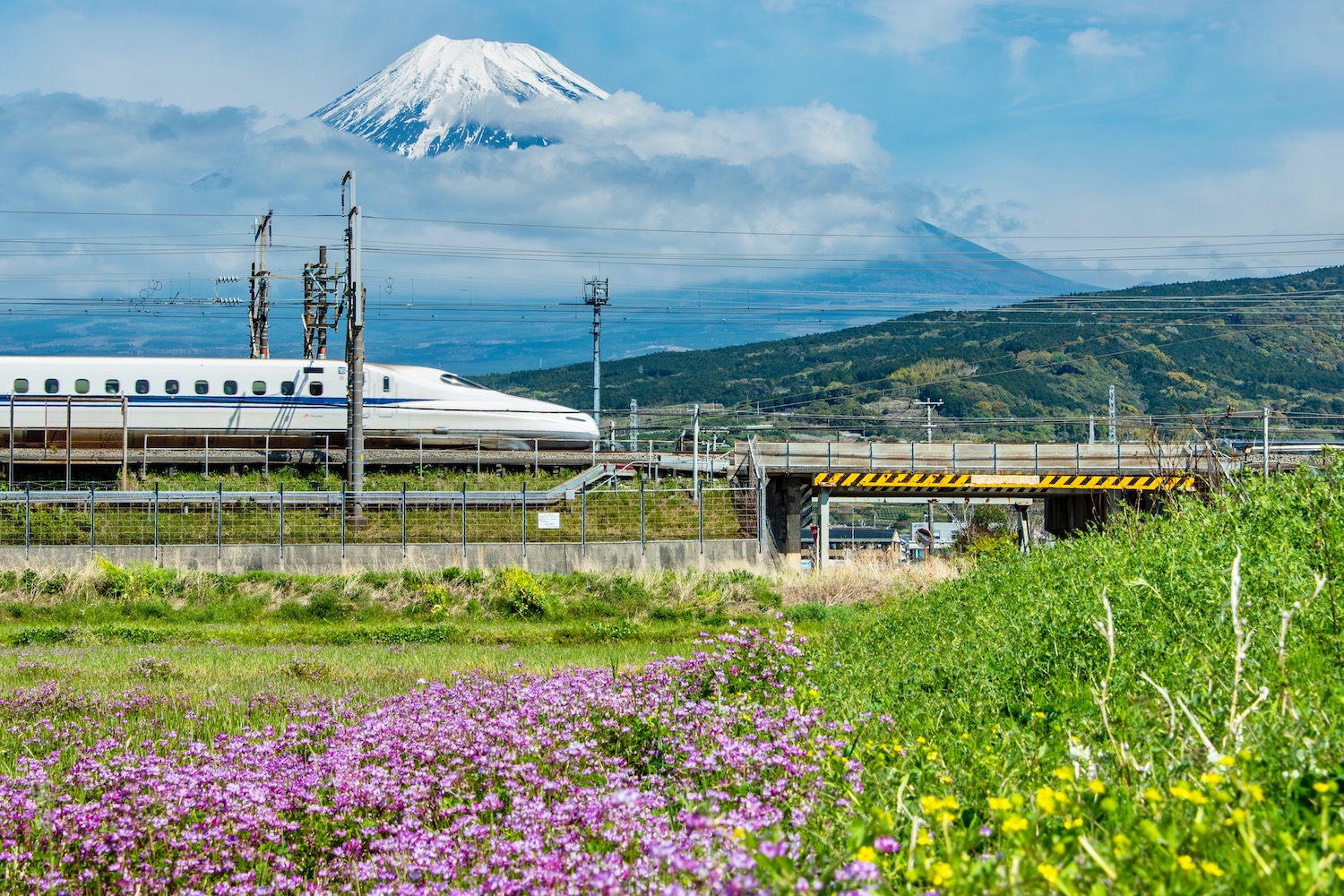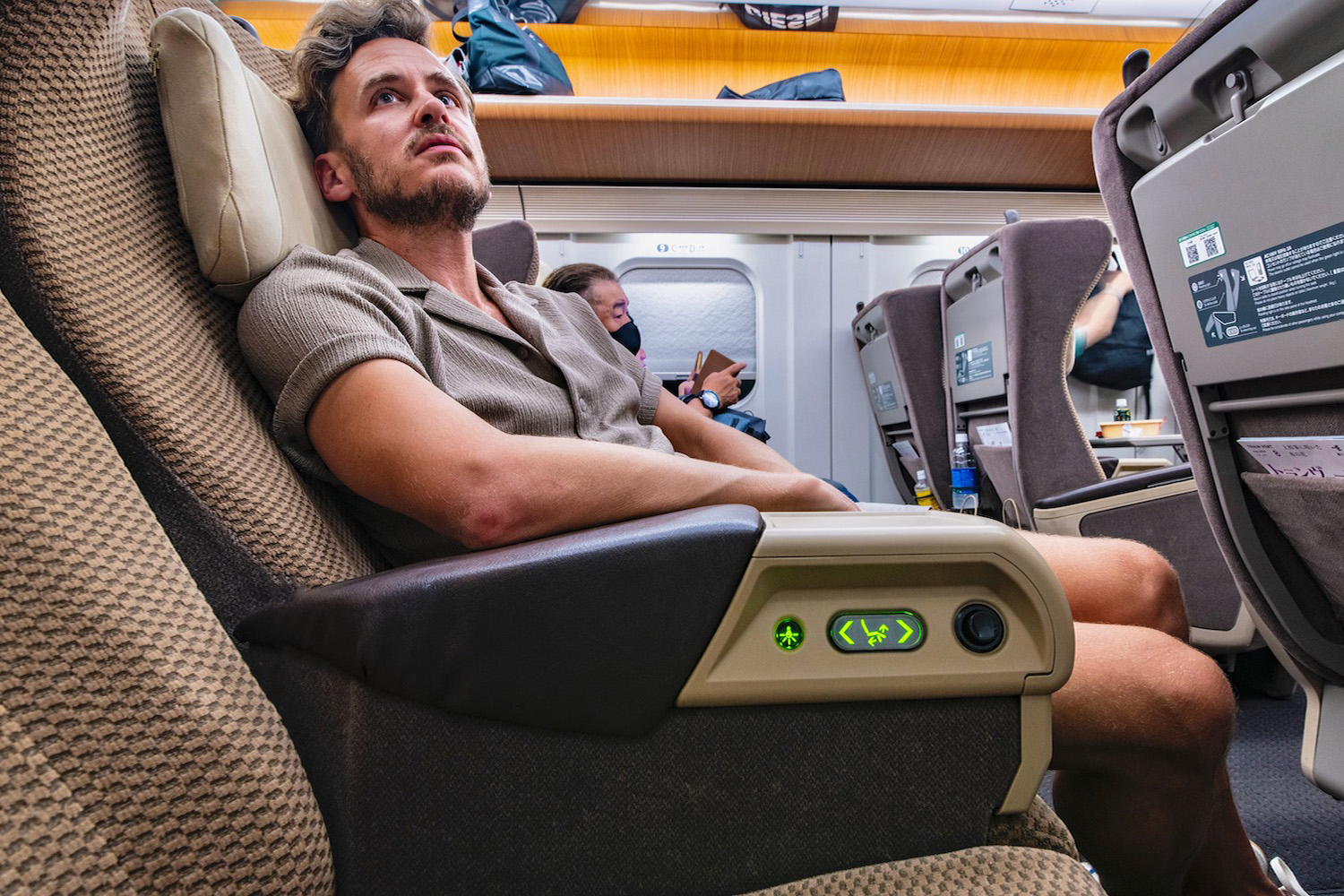Heading up to Sendai for Tanabata in the summer of 2024 (which was just a few weeks ago, as I’m writing this, but may be in the distant future for you), I faced a dilemma. Every Shinkansen I wanted to book was full!
Well, every normal seat. The Green Car was open, but I’d long since avoided it. Which was strange, given my proclivity in middle age to fly business class whenever I could. But I had nonetheless never ridden on the bullet train’s quasi-business class. Maybe it was time to try it?
All of which is to say that if you’re you’re asking yourself whether the Shinkansen Green Car is worth it, I feel you. And I’m about to let you know my thoughts about it in more detail than you probably want!
What is the Difference Between the Green Car and the Ordinary Car on the Shinkansen?
Although I did a lot of research on the Shinkansen Green Car before I finally rode in it myself, I was hoping that the experience would be different—that I would be better—than I anticipated. Perhaps there was some element of service that no one had written about, or maybe a slightly larger seat would result in me arriving at my destination feeling especially refreshed?
Or, perhaps not. The reality is that all you get in the green car is a slightly bigger seat—and, at least in theory, a smaller and more intimate cabin. Unfortunately, given how short most Shinkansen journeys are (most travelers stay on their train for a maximum of three hours), these subtle distinctions aren’t enough to make an impression that lasts beyond the duration of the trip.
5 Reasons the Green Car Disappoints Me
The seat isn’t much bigger
Seats onboard the Green Car are in a 2-2 configuration, as opposed to the normal cars, which are 2-3. Notably, this is the same arrangement as you’ll find onboard normal cars on the Akita Shinkansen, so if you’re headed that way, there’s literally zero advantage in booking the Green Car.
There’s no (free) food
Far from being Shinkansen first class, the Green Car is indeed just a normal car with bigger seats. Want more proof? While Green Car passengers on the Tokaido-Shinkansen can still order food (a privilege no longer afforded to plebs in normal cars), this is all on a paid basis; nothing is free.
(Or drink)
You don’t even get a free coffee or bottle of water traveling in the Green Car. What other kind of “premium” experience has that dubious distinction? And even if you pay, you have a very limited selection. You’re better off getting something at a konbini on the platform before boarding.
(Or service)
As I mentioned above, the Shinkansen Green Car doesn’t include (automatic) service, often not even someone pushing a cart through the aisle. Rather, you need to order using an application or web browser, which results in a person very hurriedly bringing your product to your seat for you.
It doesn’t feel premium
All of these facts combined lead to one conclusion: The Green Car is anything but premium. Indeed, it’s simply a slightly larger seat, which to me isn’t crucial because A) Shinkansen journeys don’t tend to be very long and B) the ordinary seat is spacious enough for someone of my size.

Gran Class: The True Shinkansen First Class
It’s only when you take the Tohoku-Hokkaido Shinkansen—whose trains run from Tokyo to Shin-Hakodate-Hokuto—that you can experience a truly first- or business-class experience when traveling via bullet train. I’m speaking, of course, about Gran Class, an exclusive product that includes a massive seat, a genuinely luxurious ambiance and substantial food and beverage service.
Well, sometimes. You see, even in Shinkansen Gran Class—which, as of this writing, is the highest offering on any Japanese bullet train—there are some services with reduced refreshment offerings. This means that it is theoretically possible for you to pay top dollar (or top yen, as it were) and receive nothing more than a larger seat and a bit more peace and quiet for it.

Other FAQ About the Shinkansen Green Car
Is the Green Car on the Shinkansen worth it?
I will personally only ever pay to sit in the Shinkansen Green Car again if it’s my only option, as it was the last time I rode in it. The price isn’t always significantly greater, but the experience is also nothing to write home about. It’s simply a slightly larger seat—that’s it.
What do you get in Green Car Shinkansen?
The only guaranteed benefit you get from purchasing a green car ticket on the Shinkansen is a larger seat. On the Tokaido-Sanyo Shinkansen, you also have the opportunity to order food and drinks from an application, which is no longer possible for passengers traveling in ordinary cars.
Does JR Pass cover Green Cars?
If you purchase a Green JR Pass, then it covers travel in Green Cars. However, just as the price of the JR Pass has generally increased in recent years to the point of not being worth it, so too is the Green JR Pass more expensive than the value it provides.
The Bottom Line
Is the Shinkansen’s Green Car worth it? Well, it depends on why you’re booking it. In my case, a green car ticket was the only was I was going to reach my destination (which happened to be Sendai, though that’s not really the point) at the precise time I wanted to get there. On the other hand, if you’re expecting a luxurious or even exclusive experience, I think the green car is going to disappoint you. At its root, the green car is merely a slightly larger seat—nothing more, nothing less. If you hire me to plan your trip to Japan, you’ll enjoy lots of insights in this vein. So what are you waiting for?






